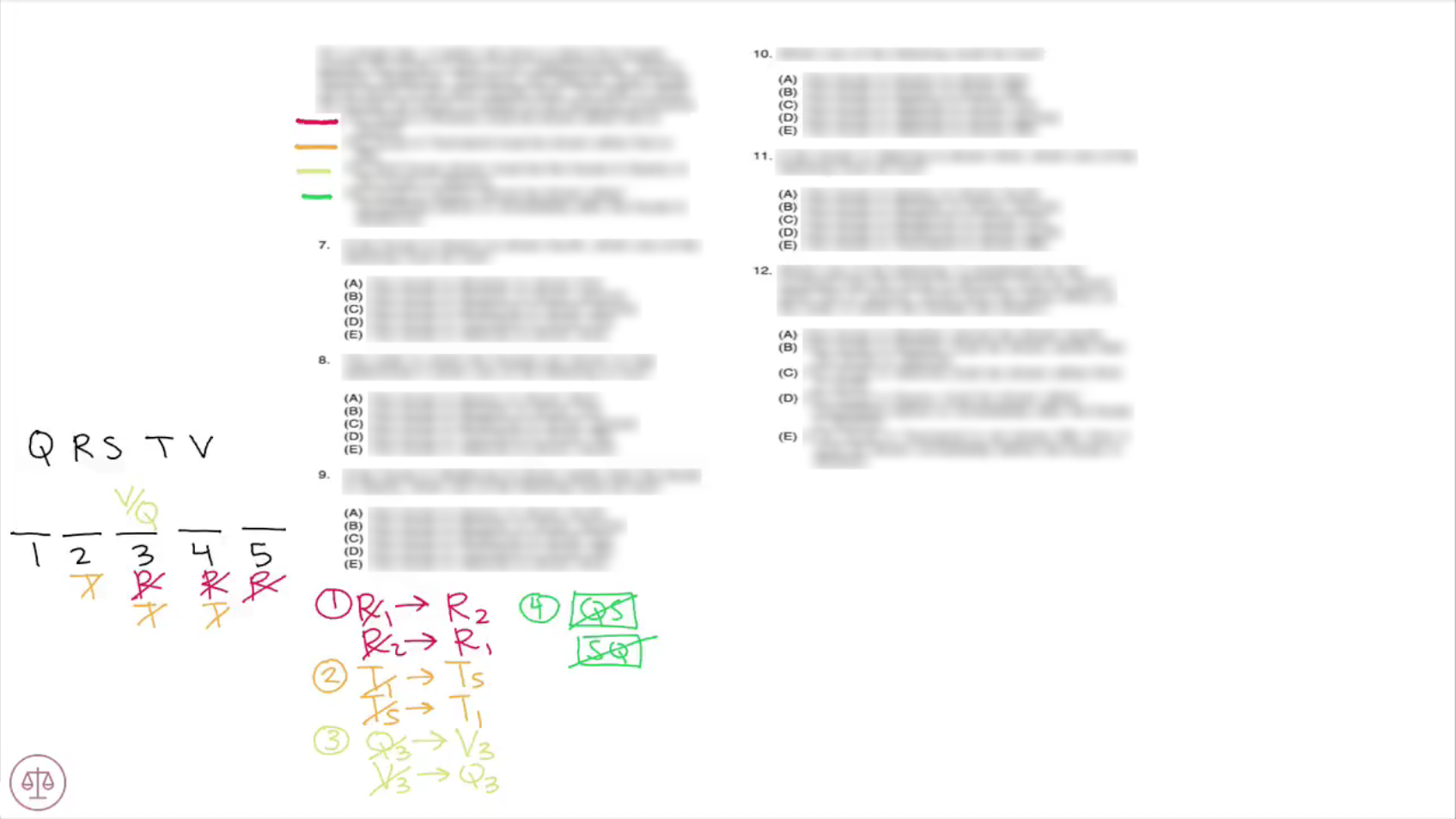The second game of the June 2014 LSAT is easy as pie. We are faced with a simple Linear Game that should rack us up a bunch of points for our overall score.
So, we are tasked with ordering the neighborhood a realtor will go to while showing houses one at a time. There are five neighborhoods: Q, R, S, T and V.
Now on to the rules! See how easy?
Rule #1 is a simple Sufficient & Necessary conditional telling us that the house in R must be shown either first or second. So, we are dealing with an “either/or” rule which we know will be diagrammed like so: if not R1, then R2. Contrapositive: if not R2, then R1. This means that R will not be shown third, fourth or fifth.
Rule #2 is another kind of “either/or” Sufficient & Necessary conditional telling us that T must be either first or fifth. That means if T is not first, then T is fifth. Contrapositive: if T is not fifth, then T is first. This means that T is not second, third, or fourth.
Rule #3 is another “either/or” Sufficient & Necessary conditional telling us that the third house will either be Q or V. So we will diagram this: if Q is not third, then V is third. Contrapositive: if V is not third, then Q is third. So, we can go ahead and place a binary in the third spot of the sequence with “V/Q.”
And our last rule—rule #4—tells us that there will always be a house in between Q and S, i.e. we will never have a “QS” block or an “SQ” block.
Don’t be dissuaded by the lack of big deductions in this game. It’s such a simple linear game that it’d be cheating if you were also given a huge deduction to make it even easier. Read the questions carefully and add six easy points to your LSAT score!
Hopefully you found this game to be easy as pie! Go ahead and review your setup by watching the full video explanation of the game setup below:










